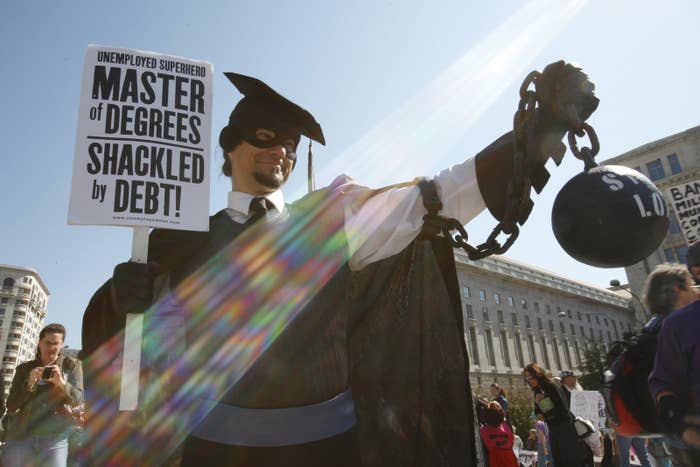
The three-year student loan default rate rose in 2017 for the first time in four years, the Education Department said Wednesday, a slight uptick that raised alarm bells about whether the country is doing enough to help student loan borrowers on the margins.
A record 8.5 million people are now in default on their loans, department data showed. More than half a million people defaulted in the first half of this year alone.
The cohort default rate — a measure of how many students default on their student loans within three years of leaving school — rose overall to 11.5% for those leaving school in 2014, up from 11.3% the year before. Though it captures only a small slice of defaulters, the rate is considered the best approximation of how colleges and borrowers are faring on this front.
The government has been pushing plans meant to help student loan borrowers stave off default, like income-based repayment, which allows people to pay 10% of their income toward their loans. On the lowest end of the income scale, borrowers can pay as little as $0 a month and have the balance of their loans forgiven after 20 years; a Trump proposal would move that bar even lower, to 15 years.
That's what makes the default numbers "particularly disheartening," said Debbie Cochrane, the vice president of the Institute for College Access and Success, a nonprofit in Washington, DC. "Borrowers have other options besides just defaulting."
The department's data show that income-based repayment hasn't done enough to stave off defaults, Cochrane said, despite increases in people who are enrolled in income-based plans.
Many borrowers simply don't know that income-based repayment plans exist, said Cochrane, either because the companies that service their student loans aren't doing enough to inform them, or because they've lost contact with servicing companies altogether.
"It's really a matter of awareness," she said.
More troublingly, income-based repayment has done little to help borrowers who are already in default, including those who defaulted outside of the three-year window captured by the default rate. The number of borrowers who are stuck in default — which can have devastating consequences on someone's credit, and lead to wages and taxes being garnished — has continued to climb.
For-profit college students made up a disproportionate number of those who had defaulted since 2014, department data showed. A third of defaulting borrowers had attended for-profits, though those colleges enrolled just 9% of all students.
But students at community colleges defaulted at an even higher rate than for-profits. Ten colleges performed so badly — with default rates above 30% — that they were in danger of losing access to federal financial aid money.
